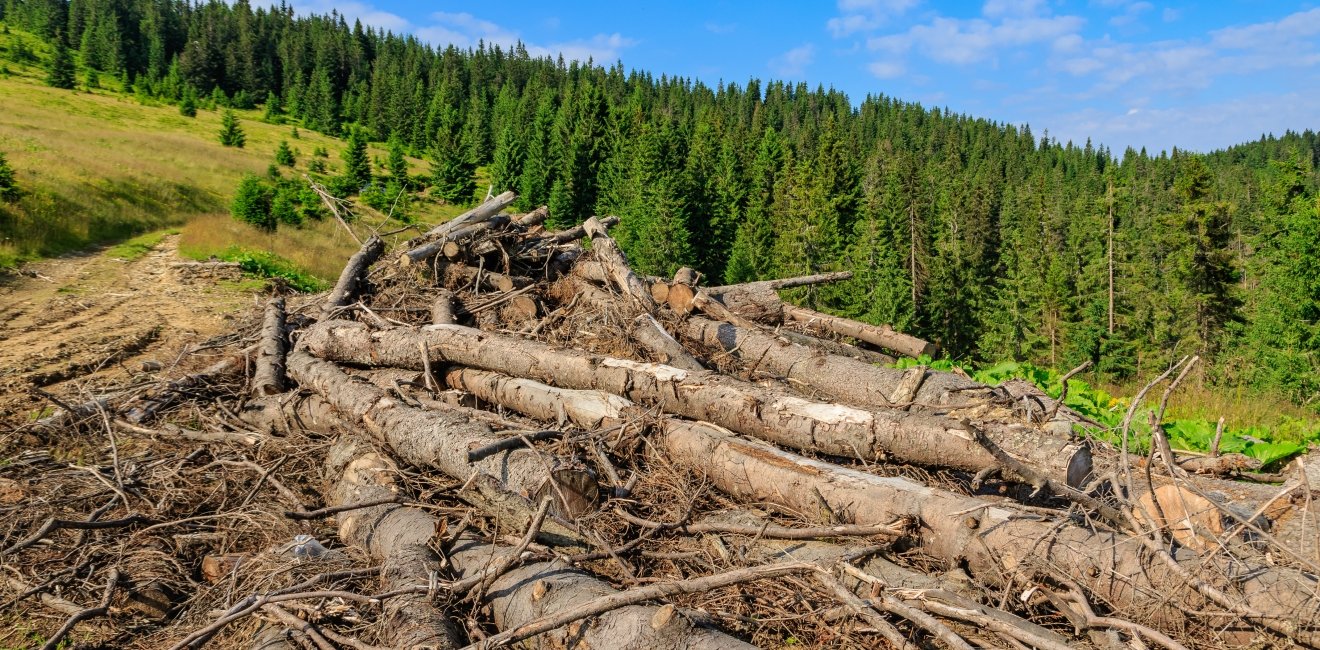
A blog of the Kennan Institute
BY VADYM DENYSENKO AND VALERIA PIVEN
Ukraine is facing significant problems with deforestation and nonzonal appropriation, but the solution to these issues has been stalled for years. However, recently a new hope for forest preservation and restoration has appeared. This month, Ukrainian President Volodymyr Zelensky announced the Green Country project, which envisages a plan to increase the forest areas of Ukraine by 1 million hectares in 10 years. Can he succeed in this ambitious goal?
The number of forested areas in Ukraine has been declining rapidly, though precise figures for losses have not yet been made officially public. With the help of satellite monitoring, international and Ukrainian research centers have recorded the scale of changes in Ukraine’s forest coverage over long periods. According to Global Forest Watch, in 2010 there were 11.3 million hectares of forest in Ukraine, occupying more than 19 percent of its total land area. As of 2016, according to Ukraine’s State Agency of Forest Resources, the total area of the forest fund of Ukraine was 10.4 million hectares, of which 9.6 million hectares were covered with forest vegetation.
Global Forest Watch assessments from 2020 indicate that Ukraine lost 79,300 hectares of forest. In total, from 2001 to 2020, 1.08 million hectares of wood coverage were lost as well, equivalent to a decrease in forests by 9.7 percent since 2000. Four specific regions saw a reduction in the number of trees, amounting to 52 percent of all tree cover losses between 2001 and 2020. Compared to the average, Zhytomyr region lost the most forests (215,000 hectares). Among other oblasts, in Rivne, forest coverage declined by 149,000 hectares; in Kyiv by 103,000 hectares; in Volyn by 97,500 hectares; and in Chernihiv by 84,600 hectares. According to a study by EOS Data Analytics, the Institute of Space Research of the National Academy of Sciences of Ukraine, and the State Space Agency of Ukraine, from August 2019 to August 2020, forests in the Rivne region were cut down by two-and-a-half times more than in the same period from 2018 to 2019: 5,395 hectares against 2,101 hectares a year earlier. Also in the Zhytomyr region for this period, forests were cut down almost 20 percent more than in the previous year.
Ukraine’s progress in forest restoration is relatively modest compared to other countries. From 2001 to 2012, Ukraine restored 353,000 hectares of wood coverage, which is equal to 0.44 percent of the overall amount. Other countries have made much better progress: during this same period, Russia restored 16.2 million hectares of forests, the United States restored 13.8 million hectares, Canada restored 9.11 million hectares, Brazil restored 7.59 million hectares, and Indonesia restored 6, 96 million hectares.
However, deforestation is far from the only problem associated with human negligence and cruelty. Recently, Ukraine’s minister of agrarian policy, Roman Leshchenko, stated that in 20 years, more than 5 million hectares of state-owned land (out of 10 million total hectares) had been put into private ownership.
As mentioned, this month at the All-Ukrainian Forum “Ukraine 30. Ecology,” President Zelensky stated that the government has set an ambitious but achievable goal: to increase the area of forests by 1 million hectares in 10 years. To do this, 1 billion trees will need to be planted in the next three years. However, the question arises—where will the government find a million hectares of land? So far, the President’s Office has not given answers about which regions will receive the most afforestation, and which lands (as well as whose property) will be given over to the new forest planting.
Government officials should consider that it is critical to plant forests not only in Ukraine’s traditionally forested western and central regions but also in the southern steppe region, in order to combat the growing desertification in the area. (The Oleshkiv sands in Kherson is the only desert in Europe.) As of 2011, the forest coverage of this region was 4.1 percent, and from 2001 to 2020, its forest cover decreased by 5,830 hectares. In Soviet times, a successful afforestation project created artificial forests in the Kherson region, establishing the largest new-growth forest region in Europe at that time.
Another problem that the authorities have to solve is the financing of such reforestation. One hectare of a newly planted forest, according to experts, costs about $500. Therefore, to implement the president’s plan to afforest 1 million hectares in 10 years, Ukraine will need about $500 million. Theoretically, Ukraine’s budget can support this goal. However, the question of the new equipment and nurseries for young trees is still unresolved. As of today, this is a vital issue, along with question of the land to be set aside for the forests.
In Soviet times, a maximum of 80,000 hectares of forest were planted in Ukraine. Current technologies allow reaching a conditional design capacity of 100,000 hectares per year (1 million hectares in 10 years). But the project requires a proper administration of such a long-term project, including control of local elites who have been profiting from deforestation for decades. The success of this project directly depends on whether President Zelensky will be able to create a solid public administration of the project that will not allow officials to make money on “shadow schemes” with forests.
The opinions expressed in this article are those solely of the authors and do not reflect the views of the Kennan Institute.
Authors



Kennan Institute
After more than 50 years as a vital part of the Wilson Center legacy, the Kennan Institute has become an independent think tank. You can find the current website for the Kennan Institute at kennaninstitute.org. Please look for future announcements about partnership activities between the Wilson Center and the Kennan Institute at Wilson Center Press Room. The Kennan Institute is the premier US center for advanced research on Eurasia and the oldest and largest regional program at the Woodrow Wilson International Center for Scholars. The Kennan Institute is committed to improving American understanding of Russia, Ukraine, Central Asia, the South Caucasus, and the surrounding region through research and exchange. Read more

Explore More in Focus Ukraine
Browse Focus Ukraine
Talking to the Dead to Heal the Living

Ukrainian Issue in Polish Elections


